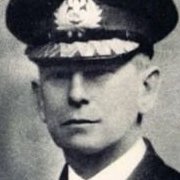Interference from power transformer
-
Recently Browsing 0 members
- No registered users viewing this page.
-
Topics
-
-
Popular Contributors
-
-
Latest posts...
-
30
Report Air Cambodia Denies Copying Thai Airways Amid Branding Backlash
i just fly air cambodia A320,relativly new age 6 yrs configurated buissens and economy , ,served a snack free,32kg incl bag and you could get free towls and blankets (dont need on short flight) ,friendly cabin staff. en time. far other /betterexperience than the bad lanmaal air or angkor sky the airplane just was aquired by air cambodia ,so i like the interiour the seats made in jeans(little mookie) ,but i think they will change the whole cabin interiour I cant see anything they copyed, the dresses of the staff was similar to thai ,but again,they similar in culture outside paint on the airline , i think nobody compare it to thai ,only maybe some nationalist thai and no brainers. fazit , due to low age of fleet and service (average age skytrax uner 9 yrs), i would take again if price is right , -
18
Crime AI Surveillance Cameras Help Thai Tourist Police Arrest Nearly 300 Fugitives
• Pattaya, Chonburi – 110 arrests • Nakhon Ratchasima – 89 arrests • Chiang Mai – 71 arrests • Suvarnabhumi Airport, Samut Prakan – 4 arrests • Khon Kaen – 9 arrests • Udon Thani – 3 arrests • Nong Khai – 2 arrests • Tak – 2 arrests • Nakhon Phanom – 1 arrest So none in Phuket!!!! Jing lor????😏😏😏😏🤣😂🤣😂 -
14
Habba,Bondi,Pirro,Noem,Tulsi,Karoline ,MAGA Women...
But then again, probably not. -
7,139
-
7,139
-
7,139
-
-
Popular in The Pub











.thumb.jpg.bc523c85a8d558dbc282dca7a2e602c9.jpg)

Recommended Posts
Create an account or sign in to comment
You need to be a member in order to leave a comment
Create an account
Sign up for a new account in our community. It's easy!
Register a new accountSign in
Already have an account? Sign in here.
Sign In Now